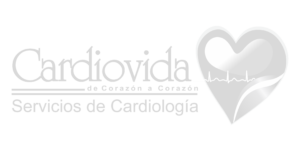Monitoreo Ambulatorio de la Presión Arterial
¿Qué pacientes necesitan monitoreo ambulatorio de la presión arterial?
Blood pressure is one of the most important risk factors for cardiovascular diseases; therefore, this method is essential both for diagnosis and for managing blood pressure. Blood vessels are responsible for distributing oxygen and nutrient-rich blood from the heart to the rest of the body. However, when the pressure exerted by the blood on the arteries is elevated, the condition known as arterial hypertension occurs. Sustained high blood pressure not only overworks the heart, but also progressively affects the arteries, causing widespread damage to organs such as the brain, heart, kidneys, and eyes, making them more vulnerable to hypertension.
Arterial hypertension is the main risk factor for developing ischemic heart disease (heart attack) or ischemic stroke (CVA), which are among the leading causes of death and disability worldwide. In the long term, 92% of the adult population over 45 years of age is likely to have hypertension, according to the 2017 hypertension guidelines.
In Colombia, approximately 43 out of every 100 adults have hypertension, and many are unaware of their condition or have it under inadequate control. Arterial hypertension generally produces no symptoms, which is why it is often called the "silent enemy." The only way to diagnose it is through regular blood pressure checks during medical visits or at home. To achieve an accurate diagnosis, repeated measurements are required. However, 50% of patients show higher blood pressure readings during consultations than those taken at home, as a result of stress from the medical setting, leading to unnecessary or excessive treatment. On the other hand, about 30% of hypertensive patients show lower-than-actual readings during consultation, which may delay diagnosis and control.
Ambulatory Blood Pressure Monitoring (ABPM), also known as Holter monitoring of blood pressure, is a non-invasive and highly accurate technical method that allows blood pressure to be measured over a specific period of time, typically 24 hours. This way, all tension data is collected and can later be analyzed by the physician. It is the most accurate method for diagnosing hypertension, also known as Ambulatory Blood Pressure Monitoring (ABPM). This is a simple, non-invasive test that uses a device programmed to automatically measure blood pressure during the day and night, giving average values without being influenced by the stress of medical visits. For this reason, many experts consider it the ideal way to diagnose and manage blood pressure. It is also the only method for:
- Detecting nighttime hypertension, an important marker of stroke and heart attack risk.
- Measuring pressure during sleep, which provides crucial information often missed in daytime readings.
- Evaluating blood pressure variability in daily life using a device worn for 24 hours.
- Offering the physician better data to personalize and optimize treatment.
Indications for Ambulatory Blood Pressure Monitoring
This diagnostic procedure is performed in individuals with the following characteristics and always under medical indication:
características y siempre bajo indicación médica:
- This diagnostic procedure is performed in individuals with the following characteristics and always under medical indication:
- Determining the effectiveness of antihypertensive medications
- Treatment-resistant hypertension
- Episodic hypertension
- Syncope under evaluation
- Drug research purposes
- Ruling out white coat syndrome (high blood pressure when evaluated by a doctor, which disappears in other circumstances)




